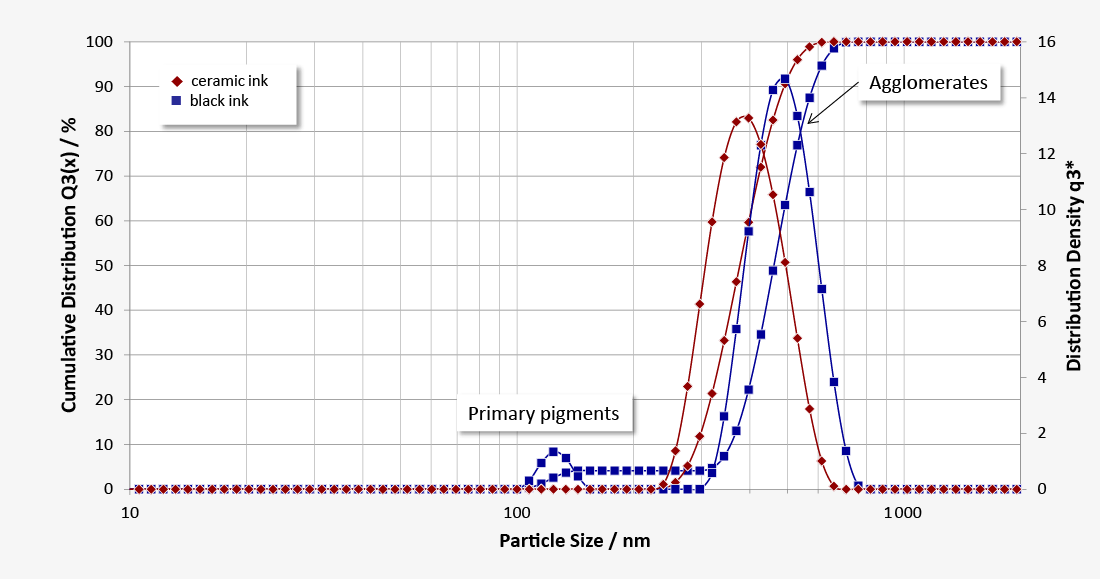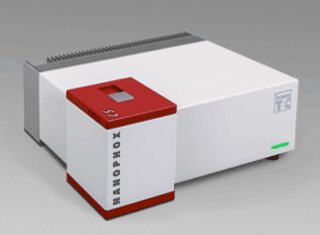Monitoring of pigment size and stability of inks
Inks or paints, e.g. ceramic inks or printing inks, are commonly multi component systems. An important component is the pigment, which adds colour to the suspension.
Important quality characteristics are particle size and distribution width of pigment particles. They immensely influence colour intensity, surface quality, UV-resistance and durability or stability of the final product. Furthermore, particle size needs to be small enough to avoid blockage of the printer mechanism’s nozzles. Agglomerates are undesired and must be detected.
Particle size distribution of ink pigments

The ceramic ink is within the size range of 256 nm to 613 nm monomodal distributed. The black printing ink shows a bimodal distribution. The primary pigments range in size from 100 to 150 nm. Large fractions of the volume are agglomerates with sizes between 300 nm to 750 nm. This ink is of bad quality and could clog the cartridge.
Particle size also plays an important part in rheology. Reduction of particle size while volume concentration remains constant results in an increase of viscosity and influences the flow properties.
To obtain optimal primary particle size, suspensions are finely ground. The grinding process and the final fineness of the pigments can be examined in a highly concentrated state with high resolution particle size analysis using photon cross-correlation spectroscopy (PCCS). The sample preparation effort is minimal. Particle size, dispersion width and polydispersity are reliably detected with this version of dynamic light scattering in addition to dispersion stability.
- Reliable particle size analysis from nano meter to micro meter range
- Examination of dispersion quality and long-term stability
- Measurement of samples with high nano particle concentration
- Detection of agglomerates and primary particles
Download application notes for detailed information
Are you interested in additional content? Please register an account. After confirming the registration link brochures, application notes and other documents on particle measurement will be available for download.
Application strengths
- Measurement of nano particle size independent of dilution grade
- Less effort with sample preparation
- Easy and robust measuring method
- High resolution of multiple particle distributions through manual NNLS evaluation mode
- In-situ measurement of long-term stability
Customer benefits
- Reduction of sources of error caused by elaborate sample preparation
- Fully automated measuring method
- Optimization of quality characteristics by reliable measurement of particle size distribution
- Support in development of inks and paints on the basis of nano particles












